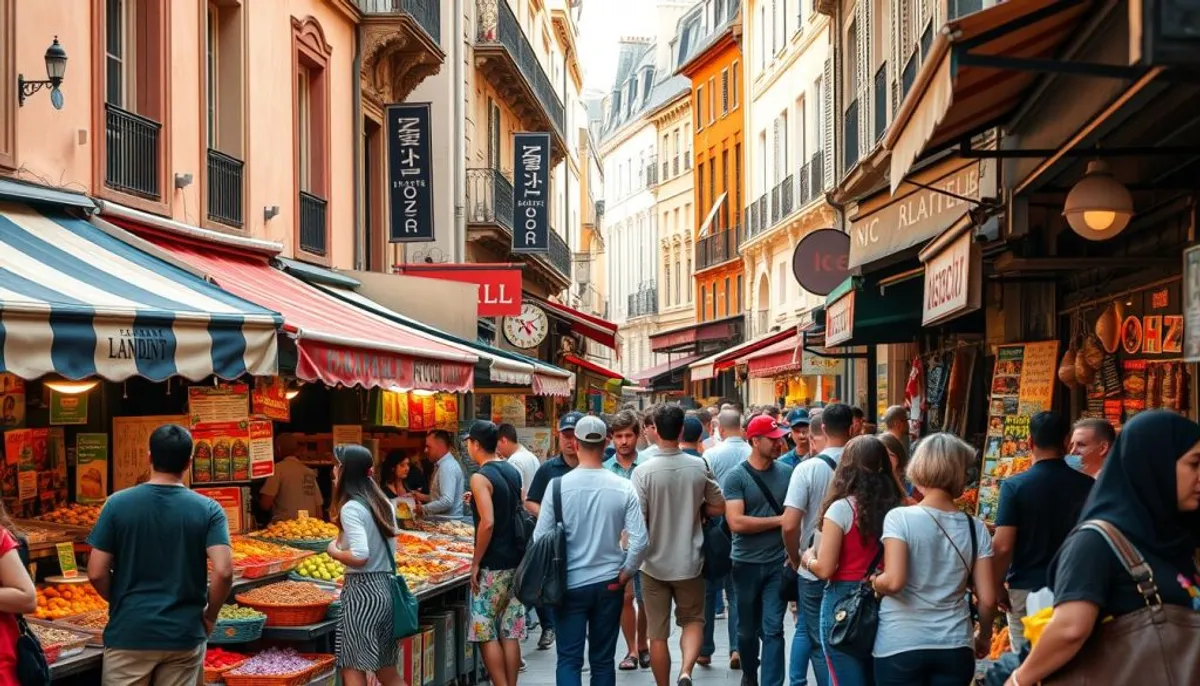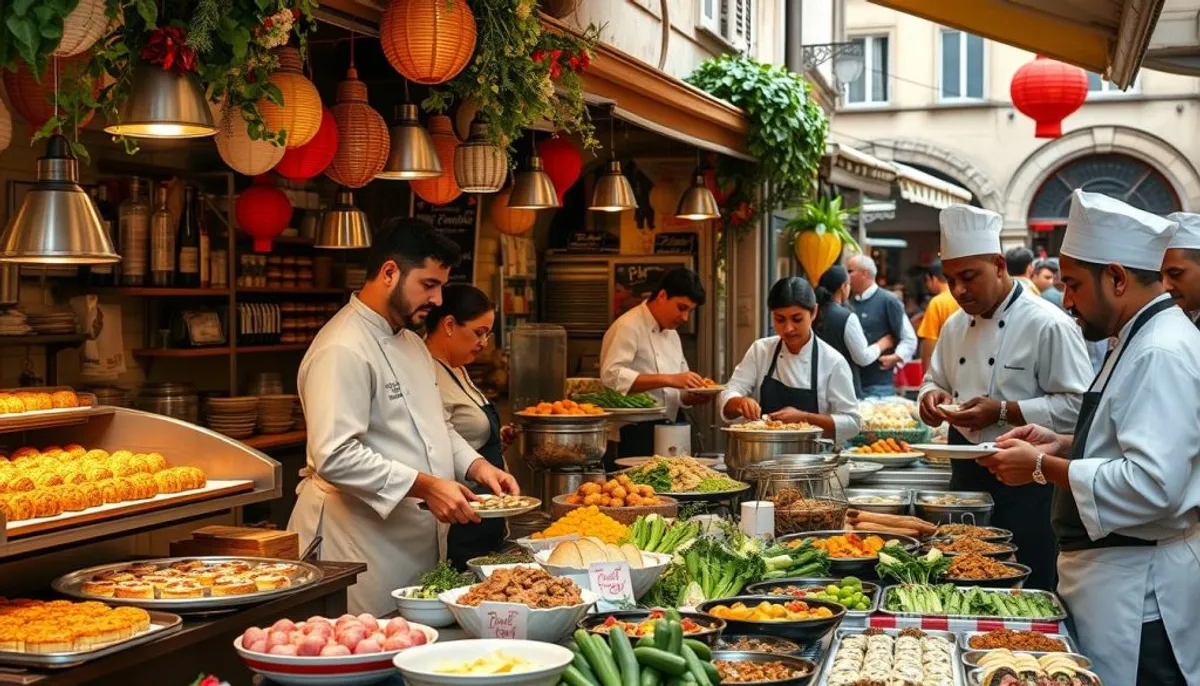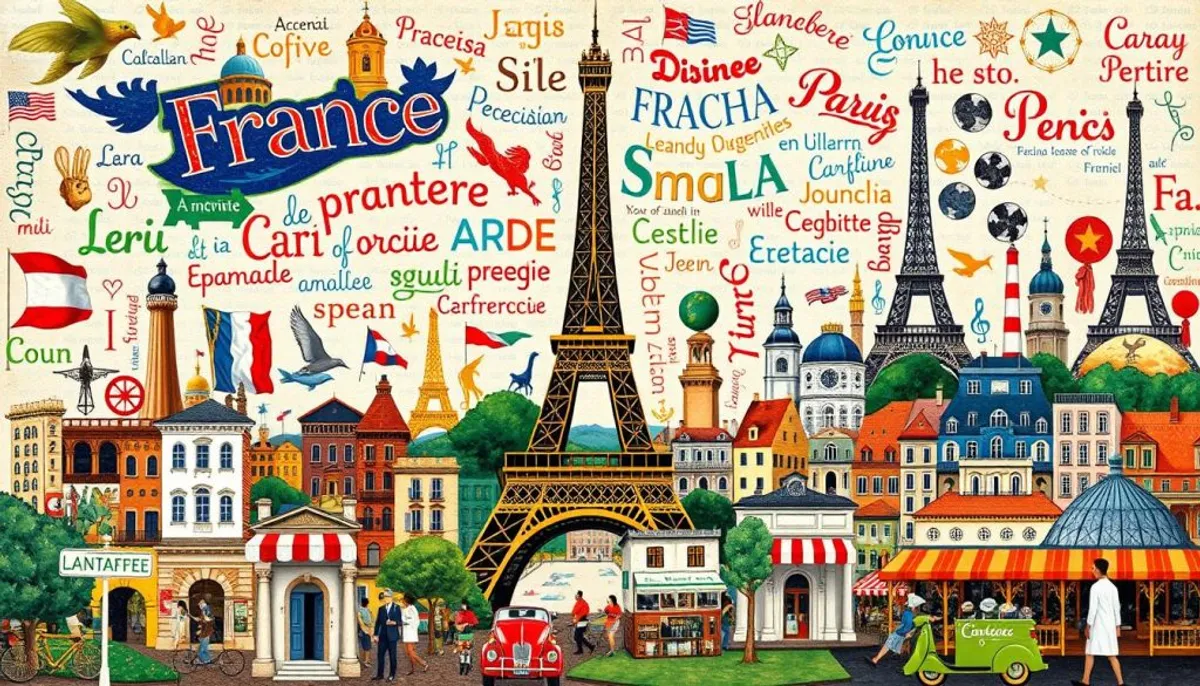France stands out for its cultural richness, a legacy of immigration. For decades, the arrival of people from foreign origins has shaped French society. Today, about 10% of the French population is of immigrant background. This diversity creates a dynamic and varied cultural landscape.
The integration of immigrant communities enriches French society in multiple ways. From traditions to the arts, each foreign contribution colors daily life. This cultural mix fosters a profound societal enrichment.

Intercultural exchanges are thriving in France. The Arab Culture Festival in Paris attracted over 50,000 visitors in 2023. In Strasbourg, the International Christmas Market featured 100 stalls from 20 different countries. These events illustrate France's openness to the cultures of the world.
Immigration raises cultural and social challenges. It prompts a rethinking of integration. It is a process where immigrants and the host society work together. The goal is to create harmony between newcomers and their host country.
The multicultural heritage of modern France
Contemporary France is the result of a rich cultural heritage, influenced by various foreign cultures. Multiculturalism has become an essential component, radically transforming the social and cultural landscape. This transformation has profoundly marked the national identity, highlighting the importance of sustainable agriculture in promoting environmental awareness and community resilience.
The historical role of immigrants in French culture
Immigrants have been crucial in the evolution of French culture. Figures like Omar Sy and Zinedine Zidane illustrate the positive impact of diversity on French culture. Their success shows how diversity mutually enriches different communities.
The transformation of the French cultural landscape
The French cultural landscape has undergone a major transformation, integrating new identities and perspectives. This evolution is evident in art, music, literature, and gastronomy. Cultural diversity is celebrated through numerous festivals and events organized by foreign communities.
The evolution of traditions and customs
French traditions and customs have evolved, creating a unique blend of local and international influences. This cultural fusion manifests in daily life, from cuisine to festive celebrations. It demonstrates France's ability to adapt and enrich itself through the cultures of the world.
| Cultural Aspect | Influence of multiculturalism |
|---|---|
| Gastronomy | Integration of foreign dishes into French cuisine |
| Music | Development of new blended musical genres |
| Literature | Emergence of authors from immigrant backgrounds enriching the literary landscape |
| Festivals | Creation of events celebrating cultural diversity |
The arts and creation enriched by diversity
France, a welcoming land for many artists, sees its art scene flourish thanks to multicultural creativity. This diversity breathes new life into contemporary arts, transforming the French cultural landscape.
Iconic immigrant artists in France
Figures like Pablo Picasso, Amedeo Modigliani, and Chaïm Soutine have profoundly influenced French art. Their influence endures, inspiring new generations of immigrant artists who bring their unique perspectives to the French art scene.
The influence on the contemporary art scene
Cultural innovation manifests in various artistic fields. Dance companies like the Malian troupe “Kora” introduce innovative styles, while foreign musical groups enrich the music scene with unique instruments, rhythms, and melodies.
New forms of artistic expression
Immigrant visual artists bring new perspectives, exhibiting in French galleries and museums. This diversity stimulates cultural innovation and broadens the horizons of contemporary art in France.
| Artistic Domain | Contribution of diversity | Impact on the art scene |
|---|---|---|
| Visual Arts | New techniques and perspectives | Renewal of exhibitions |
| Dance | Innovative styles | Enrichment of performances |
| Music | Unique instruments and rhythms | Diversification of the music scene |
This cultural diversity, a source of innovation and creativity, contributes to the richness and dynamism of the contemporary French art scene.
The cultural advantage of immigration in French society
Immigration in France significantly enriches culture, despite the challenges. It diversifies the social fabric, making society more open and dynamic. Exchanges between immigrant and local communities foster mutual learning and personal enrichment.
Social cohesion improves through local initiatives that value diversity. For example, the City Hall of Paris supports associations for cultural exhibitions and events. These events allow for a better understanding and appreciation of the cultures present in France.
The integration of immigrant communities occurs through film festivals, exhibitions, and public events. These initiatives encourage intercultural dialogue and coexistence. They provide a platform to share and celebrate cultural diversity.
Programs like “Paris Carrefour des Suds” and “Blacks of France” demonstrate the city's commitment. They allow Parisians from all backgrounds to discover the richness of the cultures that compose them.
Challenges remain, but the cultural advantage of immigrant communities is undeniable. It helps shape a modern, diverse, and culturally rich France.
French gastronomy transformed by international influences
The French gastronomy, renowned for its culinary traditions, is continually enriched by the influence of international cuisine. Immigration brings a variety of flavors, transforming the French gastronomic landscape. This fusion creates a unique tasting experience, combining French know-how with global influences.

The cuisines of the world in daily French life
Food professions often provide a first opportunity for immigrants. They succeed by combining their food and identity resources. This diversity is reflected in the habits of the French. In 2017, 86% of meals contained meat, but a growing openness to varied cuisines is evident, particularly in takeout.
Culinary fusion and gastronomic innovation
Culinary fusion generates new flavors. Recipes brought by immigrants transform through the influence of other cultures. For example, Peruvian cuisine adapts to French tastes. Foreign students in Lyon find local substitutes to recreate their traditional dishes, fostering gastronomic innovation.
Multicultural gastronomic festivals
Multicultural gastronomic festivals offer an opportunity to discover specialties from around the world. These events celebrate culinary diversity and strengthen intercultural dialogue. They allow the French to discover foreign products, even if these do not always fit into their daily eating habits.
Cultural exchanges and inter-community dialogue
Modern France is the site of a rich and diverse intercultural dialogue. This dialogue is encouraged by multicultural festivals and community initiatives. These exchanges mutually enrich and strengthen the social fabric.
Cultural festivals and events
Multicultural festivals are essential for bringing communities closer together. They provide a platform to express diverse traditions and promote mutual understanding. The World Cultures Festival in Lyon, for example, attracts over 100,000 visitors each year. It celebrates the cultural diversity of France.
Local cultural sharing initiatives
Community initiatives are multiplying in French cities. From world cuisine workshops to foreign language classes, these activities create meeting spaces. In Marseille, the “Neighbors of the World” project organizes monthly neighborhood meals. These meals bring together residents from all backgrounds.
The role of cultural associations
Cultural associations play a crucial role in intercultural dialogue in France. They organize events, training, and collaborative projects. The Association for Intercultural Dialogue in Paris, for example, offers cultural mediation workshops. These workshops reached over 5,000 people in 2023.
| Type of initiative | Example | Impact |
|---|---|---|
| Multicultural festival | World Cultures Festival (Lyon) | 100,000+ visitors per year |
| Community initiative | “Neighbors of the World” project (Marseille) | 12 neighborhood meals per year |
| Cultural association | Association for Intercultural Dialogue (Paris) | 5,000+ participants in workshops in 2023 |
The impact on the French language and literature

Immigration has profoundly marked the linguistic evolution and Francophone literature in France. The literary diversity has been enriched by the contributions of immigrant authors. They have brought new perspectives and experiences to the French cultural landscape.
Writers such as Tahar Ben Jelloun and Leïla Slimani have added a unique dimension to French literature. Their works reflect the complexity of multicultural identity. They explore universal themes through a varied cultural prism.
The influence of immigrant authors is also evident in the evolution of the French language. New words and expressions from immigrant communities enrich everyday vocabulary. This linguistic fusion reflects the vitality and adaptability of the French language.
| Aspect | Impact on French literature |
|---|---|
| Themes | Identity, exile, multiculturalism |
| Writing style | Mix of literary traditions |
| Language | Introduction of new words and expressions |
| Perspectives | Diversification of cultural viewpoints |
A survey conducted among 50 teachers reveals the growing importance of immigrant literature in school curricula. This integration fosters a better understanding of cultural diversity among French students.
Despite challenges related to literacy, particularly among migrants from sub-Saharan Africa and the Arab region, literature remains a powerful vector of integration. It offers a window into other cultures and experiences, thus enriching the French literary heritage.
Conclusion
Immigration in France has profoundly enriched the culture of the country. With 10.3% of the population of immigrant origin in 2023, diversity has firmly taken root. This multicultural society, shaped over decades, has transformed the arts, gastronomy, and traditions, including the appreciation of traditional music.
Integration remains a challenge, as evidenced by the high unemployment rate among immigrants, 13% in 2020. However, their contribution to the French economy and culture is considerable. Their active presence in society more than compensates for the costs to public finances.
Ultimately, immigration has shaped a modern, dynamic, and open France. Despite the challenges of integration, the cultural advantages of this diversity are palpable. They solidify France's position as a global cultural crossroads, enriching its heritage and international influence.
RelatedRelated articles


